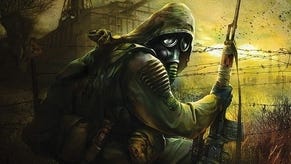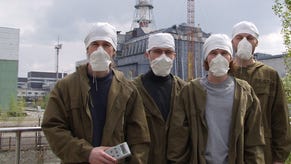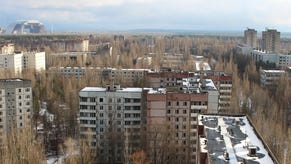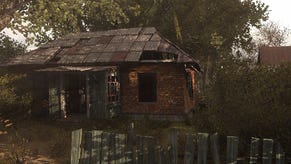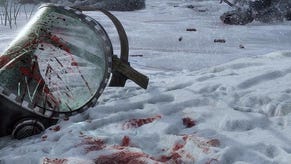S.T.A.L.K.E.R: Shadow Of Chernobyl
We went to Chernobyl and came back with a preview. What's this strange lump?
Of all the odd press trips in the world, none can quite come close to the culture shock endured on the THQ-sponsored 'jolly' to GSC's Kiev-based studio in the sunny Ukraine. Of course poker-faced customs officials are par for the course - ever been to the States? Even the legions of furry hat-wearing folk (with no furry hat shops, sadly) and unfeasibly long-legged beautiful women didn't phase us as such, nor the fact that they wired us up to a vodka drip and forced us to eat a selection of some of the most bizarre and inedible 'food' substances ever.
That was all fine. But when they invited us on a cheery tour to go and see Chernobyl for fun, we knew something had gone awry in our lives. Stranger still, during the press conference to promote the much anticipated mutate 'em up S.T.A.L.K.E.R, they wheeled one of the men responsible for the tragedy. I didn't know whether to laugh or throw things. Instead an indignant French journo let THQ have it with both barrels for 'making money out of a tragedy' before storming off in a huff to drink some free Stella.
Can you be beautiful while staggering?
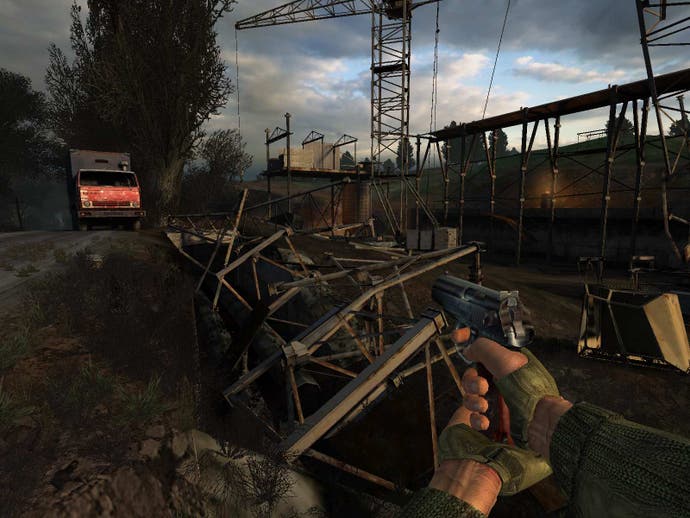
As for the game... well. It looks staggeringly beautiful, and takes PC visuals to a place we've all been looking forward to for a long, long time. In common with Far Cry's stunning views, GSC does it too with an engine that seems capable of rendering an entire sprawling landscape to an almost unbelievable degree of clarity, fidelity and detail. As you will know from the leaked movies and the few official screenshots available, this is a game that takes attention to detail to new levels - if you have the rig, that is. Much like any cutting edge FPS, you'll definitely need the kit, and we're talking high end to do the game justice.
Based - with a degree of artistic license - on the real thing, the small team at GSC actually went themselves down to the stricken reactor to gather source material, and have done a fantastic job of replicating the rust and decay. Every wall is a mass of peeling paint, every structure precarious, dank and twisted with abandonment. Every environment is brought to life with textures that have no right to look that good. The mass of untroubled, tangled vegetation is occasionally interrupted by an ominously towering pylon, and it just looks so good you want to just run around like a kid let loose in a field.
The game itself promises to be a lot more than your average shooter. Based on the premise that you've gone to explore the 20km 'exclusion zone' of Chernobyl, what you do after that is essentially your choice, according to GSC's Oleg Yavorsky: "We made it an open-ended game where each player can become whatever they want to become. He has the freedom to move and act and it's up to him. You can save people; for example, you can rescue scientists, or Stalkers. You can give them a hand in trouble or you could be a murderer - and there are different types of Stalkers who pursue their own goals."
Hostile daughters
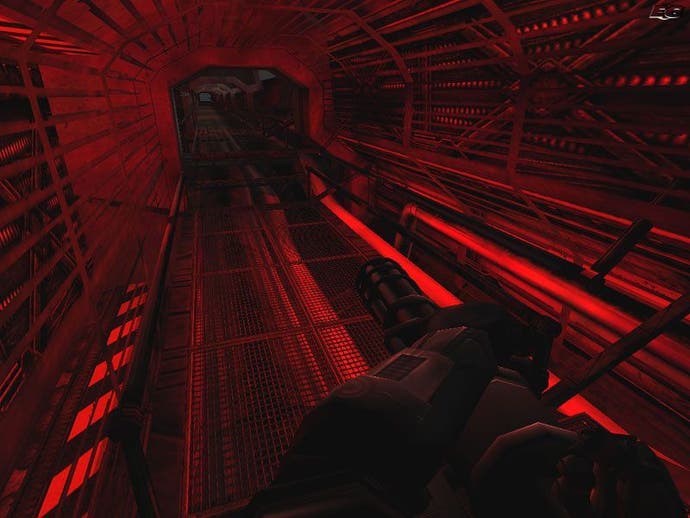
So with its Deus Ex-style non linear overtones, S.T.A.L.K.E.R is clearly more than just about the pretty visuals, and the team has let its imagination run riot with thoughts of what the radiation has done to the environment after all these years: "There are mutants, obviously, who are always hostile to you and you can't do anything about - this is a first-person shooter," insists Yavorsky.
"The key message is the player has freedom to act and become - at the end - whatever he wants to, it's up to him. We have over eight different endings," he boasts. This will certainly make a welcome change to the linear 'play once and never again' clutch of games that we've blasted through over the years, giving a degree of replayability not seen too much in modern games, particularly FPS titles.
GSC is strapping its standard firmly to the single-player element as its priority: "Primarily, S.T.A.L.K.E.R, as we see it, is a single-player game where the player lives in this world and the game has multiple endings. Also [he's got] freedom and therefore we do hope that and expect the player to replay because it will be interesting to play through several times seeing as each time you play it the life simulation will make it a different experience - [but although it's] mainly single-player we also care for multiplayer as well."
A mutant's work is never done

With the game just 70 per cent complete when we visited GSC back in late February, there was still plenty of work to be done for the team to hit its September ship date. Having such a small mocked up portion of the game to play did worry us that the game would struggle to hit that date, but THQ's Mike Gamble assures us: "It's hit every milestone we've given them so far."
As for "hands-on" experience, each of the assembled press were given just 15 minutes to run around and achieve a few basic objectives to get a feel for the game. Despite the usual ambitious claims that the game would have "the most complex AI system that exists today" with over 200 parameters allowing for a living breathing world, sadly, at this stage the AI was far from finished. Most of the subtleties promised were by GSC's own admission not implemented, and we'll just have to wait and see if they come good. The packs of strange mutant dogs, for example, that roam around were supposed to be avoidable, but instead just savaged us relentlessly whenever we got near. Meanwhile, other strange quirks stopped us from completing the demo goals, so it's definitely too early to tell whether the gameplay is up to scratch at this stage. Consider this a privileged first look at a Work In Progress than a bona fide hands-on preview, because it was far from useful in that respect.
The environments, as we've said, were unquestionably brilliant, with a fantastic day-night cycle to lend the game an even more atmospheric air. GSC didn't show us too much in the way of character models, sadly, limiting us to a hideously mutated dog, a wonderfully detailed old man and a shambling, aggressive Stalker. Certainly, what we've seen so far tends to suggest this could match the heights seen in rival next-gen shooters - but in one of the most elaborate and sprawling environments that lends a bewildering degree of freedom. If we were to raise any doubts, it would be that this 'freedom' could lead to a lack of focus and endless wandering. Even in the 10 minute demo, we were constantly checking our map to see which direction we were wandering off in, but, like we said, the demo laid on for us was way too limited to make an informed report on how the finished article will play.
Bolt thrower
Weapon wise, as well as the usual modern day firearms that you'll all be familiar with, there are a few novelties in the mix, such as the way you're forced to consider the environment's radioactivity. Throwing metal bolts, for example, reacts violently to areas of high radiation. Ignore this and you end up with fuzzy black and white vision before inevitably slumping to the ground. Strange apparitions also appear to chase you down in certain areas, so it's definitely not all about mutants, zombies and mercenary bandits. But whatever they are, it's shaping up to be one of the scariest, most original takes on the increasingly tired FPS genre that we've seen, and will hopefully prove to be the complete package of exceptional visuals married to convincing AI and incredible replayability.
Expect more on S.T.A.L.K.E.R when we get a fully playable build. Until then, read what GSC's Oleg Yavorsky has to say on some of the key points of the game in an interview elsewhere on the site.


